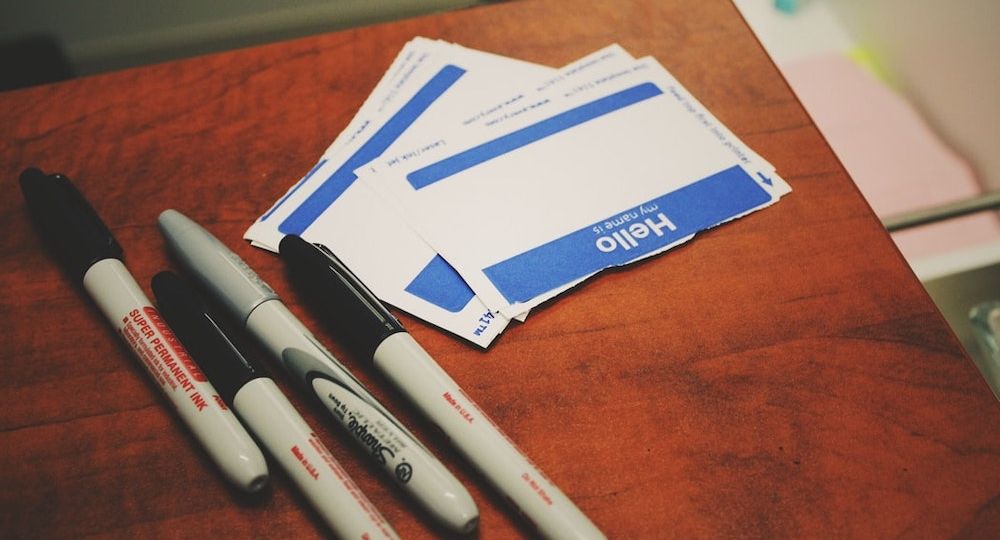
When my mother was pregnant with me in 1975, “Clancy” was on my parents’ short list of baby names. But before I was born, they decided it sounded like an Irish drunk leaning against a lamp post, which would be a bizarre persona to bestow upon an infant. If they’d called me “Clancy,” and I’d lived up to that name, Mom and Dad would somehow be responsible for my predestined alcoholism and outdoor lighting fetish. Instead, my birth certificate says, “Casey McDonald Patrick.” Still Irish sounding, but not quite as lushy.
A name is funny that way, how the person doing the naming tries to shape the person being named. I’ve named two children and a couple of dogs, but didn’t think much about naming myself until my divorce. Should I keep “Kenley,” my married name?
My first name was never in question. In spite of that time in elementary school when some faulty mailing list determined I should receive free issues of Boys’ Life, and I cried to my mother that she’d given me a boy’s name, I’ve liked the laid-back, androgynous sound of “Casey.” It was also a very popular dog name back in the ‘80s, so things could have gotten murky for me if I had wrestled with any real identity issues.
This is not a reflection of why my marriage didn’t last, but I never loved the sound of “Casey Kenley.” I have blonde hair and smile a lot. When a woman like that introduces herself as “Casey Kenley,” you wonder if there’s much going on between her ears. It sounds like a jingle—so perky! At the time of our divorce, our sons were 12 and nine. I didn’t want to rock their worlds more than we already were, so I kept “Kenley.” But it wasn’t a name I needed to hold onto forever. So two years later, I decided to take back Patrick.
 Talking to my sons about the decision, I told them I felt more like Casey Patrick than Casey Kenley. My 14-year-old shrugged and said it made sense. Leo, age 11, reserved comment. On a bike ride a few days later, I caught him testing out the sound of it, repeating “Casey Patrick. Casey Patrick. Casey Patrick,” until he announced that Casey Patrick sounded like a superhero, like Lara Croft. An even better reason to change it back to Patrick!
Talking to my sons about the decision, I told them I felt more like Casey Patrick than Casey Kenley. My 14-year-old shrugged and said it made sense. Leo, age 11, reserved comment. On a bike ride a few days later, I caught him testing out the sound of it, repeating “Casey Patrick. Casey Patrick. Casey Patrick,” until he announced that Casey Patrick sounded like a superhero, like Lara Croft. An even better reason to change it back to Patrick!
The legal process to change your name in Hamilton County involves filing a petition to request the name change, paying a court fee, and supplying resulting legal documents to the local newspaper. For $60, the paper publishes three consecutive legal notices, which include your home address. So if someone had a problem with me changing my own name, they could knock on my door, and we could debate pros and cons. (No one knocked.) Once I received proof of publication and a publisher’s affidavit, I was ready for my court date. And because it was 2020, it was virtual.
On the morning of my hearing, I logged into the session at my kitchen table. A dozen faces filled the screen to virtually appear before the judge for name changes, some with lawyers.
“How old is your son?” the judge asked one woman.
“He’s 11,” she said.
“Have you talked to him about changing his name?” he continued.
“He asked me to change it,” she said.
Sitting beside her attorney, both of them in masks, the mother explained how she and the boy’s father weren’t together, and he wasn’t in their son’s life. The mother and son wanted his last name to be the same as hers. The judge granted the “Petition for Name Change.” From this day forward, he declared, the 11-year-old boy would share a last name with his mother. I’m sure she was smiling behind the mask. Despite my muted mic, I clapped for that mother.
RELATED: THE MASKS WE WEAR AND HONORING WHO’S BEHIND THEM
There were other petitioners with similarly touching stories, including a law school student adding her mother’s name to hers so that their Hispanic heritage would be represented and a young mother petitioning to take on the last name of her husband, who had been adopted as an adult. Two frames over in the Zoom call, an older couple who must have been the adoptive parents beamed when the judge legalized the name change. I cheered for everyone who appeared that morning. From what I could tell, they all had reasons to celebrate.
For me, changing my name was in part a formality signaling that I was no longer legally associated with my ex-husband. But going back to Patrick was more about belonging to myself again. In my marriage, I had let myself fade in an effort to not rock a sinking boat. I wanted our shared last name—and everything we had built and experienced together in our marriage—to shape our relationship into something that could last. But like a parent naming a child, that child is going to be what they are going to be. A label won’t improve their chances at happiness.
When it was my turn, I swore to tell the truth, and the judge ran through his questions. No, I don’t have any felony convictions. I’m not a sex or violent offender. And no, I’m not seeking to defraud creditors by changing my name.
“My husband and I divorced two years ago,” I said.
“You could’ve taken care of this at the time of your divorce,” the judge answered.
“I wasn’t ready then,” I told him and the rest of the people on the screen.
The judge granted my name change with the same flourish he afforded each participant in the call that morning. In the upper left corner of my monitor, a man I hadn’t noticed yet pumped his hands in the air, raising the roof in silent congratulations. I raised the roof right back.
All of our content—including this article—is completely free. However, we’d love if you would please consider supporting our journalism with an Indy Maven membership.







